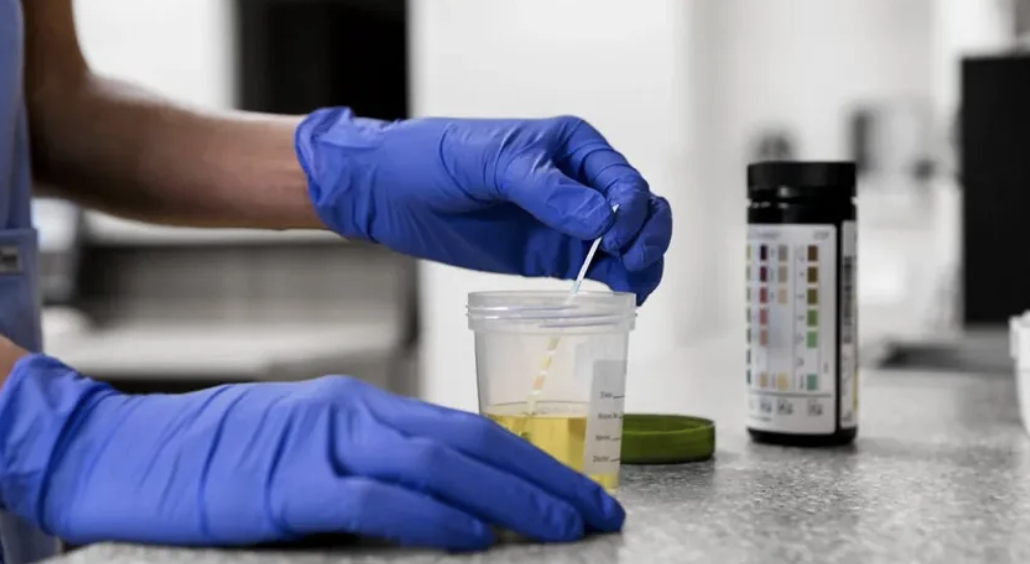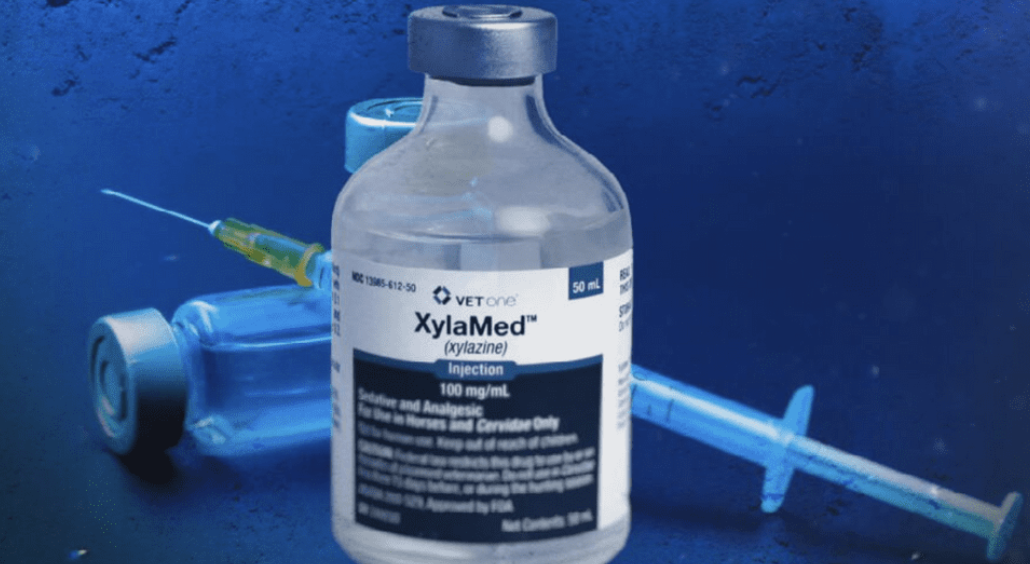Ketamine addiction involves the compulsive use of this dissociative anesthetic despite its negative consequences. Individuals addicted to ketamine often consume it regularly beyond recreational settings. Initially developed as a medical anesthetic, ketamine is now primarily used in veterinary medicine, with emerging roles in treating depression and schizophrenia. It affects perception, inducing trance-like states and hallucinations.
Signs of ketamine addiction include progressively increased consumption, unsuccessful attempts to stop use, withdrawal symptoms, and persistent cravings. Individuals spend excessive time and money on ketamine, leading to diminished interest in other activities and problems in personal relationships and work performance.
The effects of ketamine can be classified into short-term and long-term impacts. Short-term effects vary from feelings of calmness to agitation, anxiety, unpleasant hallucinations, disorientation, and nausea. Long-term consequences are more severe and include organ damage, severe abdominal pain, bladder and urinary tract issues, overdose risk, dependence, and respiratory distress.

How does ketamine addiction develop?
Ketamine addiction is defined as the compulsive, repeated use of ketamine despite experiencing harmful consequences to one’s physical health, mental well-being, or social functioning. This addiction falls under the classification of phencyclidine-like substances in the Diagnostic and Statistical Manual of Mental Disorders, Fifth Edition (DSM-5) and is officially termed ketamine use disorder.
Ketamine is a dissociative anesthetic and belongs to the class of NMDA receptor antagonists. It was originally synthesized in the 1960s for surgical anesthesia and remains in use for both human and veterinary procedures. In recent years, it has gained therapeutic attention for treatment-resistant depression and chronic pain management due to its fast-acting antidepressant effects. However, these same dissociative and hallucinogenic properties have also contributed to its misuse and recreational appeal.
According to a 2022 review by Vujović and Jotić titled “Ketamine: An Old–New Drug – Uses and Abuses”, recreational use of ketamine often stems from its ability to induce trance-like states, dissociation, and euphoria. As with marijuana addiction, users may initially experiment with ketamine in social or party settings but gradually escalate usage due to the drug's impact on memory, perception, and consciousness.
Addiction develops as the brain adapts to frequent ketamine exposure by altering its glutamatergic signaling pathways. Over time, users require larger doses to achieve the same dissociative effect, a process known as tolerance. Ketamine is commonly misused in powder form (snorted) or liquid form (injected or ingested). The liquid version is often diverted from veterinary use, while powder formulations are popular in club scenes and illicit drug markets.
Repeated use can result in cravings, psychological dependence, cognitive decline, and withdrawal symptoms when the drug is not taken, reinforcing the addiction cycle. Without intervention, ketamine addiction can progress into long-term health complications and impair every aspect of daily life.

Is ketamine addictive?
Yes, ketamine can be addictive. While it is not considered physically addictive in the same way as opioids or alcohol, ketamine poses a high risk of psychological dependence, particularly with frequent or high-dose recreational use. According to a 2021 case study by Hallab et al. titled “Ketamine Abuse: Another Side of the Miracle Drug,” ketamine misuse is now a growing public health concern, with documented cases of repeated use leading to dependency, mood disturbances, and suicidal behavior.
Low-dose ketamine, such as that used in controlled clinical settings for depression or pain management, carries a much lower risk of addiction, but that risk is not zero. When administered infrequently under medical supervision, addiction is unlikely. However, repeated low-dose use outside of structured care can lead to habituation and a growing psychological reliance on the dissociative effects. As the study by Peng Wang et al. highlights, ketamine can even enhance conditioned place preference, a marker for addiction risk, when combined with other stimulants in preclinical models.
People get addicted to ketamine for several reasons. It produces short-term euphoria, dissociation, and relief from emotional pain, which can be particularly appealing to individuals with trauma, depression, or anxiety. Over time, users may begin to rely on the drug to cope with stress or escape reality. As tolerance builds, they require higher doses to feel the same effects, increasing the likelihood of addiction and long-term harm. In summary, while not everyone who uses ketamine will develop drug addiction, both low-dose and high-dose use carry psychological risks, especially without medical oversight.

What are the common street names for ketamine?
Ketamine is referred to by several street names, which are used to disguise its identity in illicit contexts. Common street names for ketamine include "Special K," "Cat Valium," "Kit Kat," "Super K," "Jet," "Vitamin K," "K-Ways," "K-Hold," "Kelly's Day," "Honey Oil," "Barry Farrell," "Donkey," "Green," "Green K," "Keller," "Kitty Flip," "Super C," "Wonky," and "Wobble."
What are the warning signs of ketamine addiction?
Ketamine addiction is characterized by distinct behavioral, psychological, and physical warning signs. Key indicators include building tolerance, requiring higher doses for the same effects, and experiencing withdrawal symptoms when attempting to stop. Other significant signs are unsuccessful attempts to quit, regular use beyond recreational settings, mixing ketamine with other substances, and spending excessive time and resources on its use and recovery.
Individuals with ketamine addiction often continue using the substance despite facing relationship issues, poor work or school performance, financial difficulties, and legal problems. They may lose interest in previously enjoyed activities and engage in risky behaviors like using ketamine while driving. Deception about the extent of ketamine use is also common, with individuals often lying to friends and family about their consumption habits.
What factors can cause ketamine addiction?
Ketamine addiction can be influenced by various factors, although the exact causes are not fully understood. Several key elements contribute to its development:
- Genetic Predisposition: Individuals with a family history of addiction are more likely to develop ketamine addiction due to genetic factors. A study by Francesca Ducci and David Goldman highlighted that even one genetic variation can play a significant role in the development of addiction.
- Environmental Factors: A person's environment, including family beliefs, exposure to ketamine or other drugs within social circles, and living in a dysfunctional home, can predispose them to addiction.
- Mental Health Disorders: Certain mental health disorders can lead individuals to use ketamine as a coping mechanism, increasing the risk of addiction as they seek relief from symptoms.
What side effects can ketamine use cause?
Short-term Side Effects:
- Unpleasant Hallucinations: Users may experience distressing visual or auditory hallucinations, especially at high doses.
- Feeling of Calmness and Relaxation: Some users report a sense of tranquility, although this varies.
- Drowsiness: Ketamine often causes sedation and drowsiness.
- Disorientation and Confusion: Users may feel disconnected from time, space, or self.
- Increased Heart Rate: Tachycardia is a common acute response.
- Elevated Blood Pressure: The drug can trigger a temporary spike in blood pressure.
- Nausea: Gastrointestinal discomfort is frequent.
- Aggressiveness: Some users become irritable or combative.
- Difficulty Thinking: Impaired judgment and slowed thinking are typical.
- Decreased Awareness: Sensory detachment or a “floating” sensation may occur.
- Forgetfulness: Temporary memory lapses are common.
- Double Vision and Involuntary Eye Movements: Ocular disturbances are frequently reported.
- Irregular Heartbeat: Ketamine may cause arrhythmias due to cardiovascular stress.
Long-term Side Effects:
- Severe Abdominal Pain: Chronic users may develop persistent gut pain, possibly related to intestinal inflammation. A 2023 study by Xie and Zhuang found that long-term ketamine use disrupts gut microbiota and damages intestinal barrier function, contributing to gastrointestinal complications.
- Kidney Problems: Ongoing use can impair kidney function.
- Bladder and Urinary Tract Dysfunction: Ketamine is known to cause bladder inflammation, urinary frequency, and pain.
- Lack of Cognitive Ability: Long-term exposure impairs memory, learning, and attention.
- Depression: Though used in clinical settings for depression, recreational use is associated with depressive symptoms over time.
- Delusional Thoughts: Chronic users may experience psychosis or persistent delusions.
- Damage to the Digestive Tract and Brain: Structural damage to vital organs has been reported.
- Respiratory Distress: Breathing difficulties may occur, especially at high doses or with polydrug use.
- Seizures: Rare but possible, especially in users with neurological sensitivity.
- Physical Tolerance and Dependence: Repeated use builds tolerance, requiring higher doses for the same effects.
- Damage to Veins, Muscles, and Skin: Injection can lead to tissue and vascular damage.
- Attention Deficits and Decreased Sociability: Users may become withdrawn and struggle with focus or social interaction.
A 2022 scoping review by Le Cordero titled “The Abuse Liability of Ketamine” concluded that ketamine misuse poses significant physical and psychological risks, especially when used outside medical supervision. Additionally, a 2021 study by Gandolfo Soeiro et al. found that individuals with a history of polysubstance abuse tend to show more severe ketamine-related cognitive and behavioral impairments, underlining the dangers of combining ketamine with other substances.
Overall, while ketamine has therapeutic potential in controlled settings, long-term or unsupervised use can lead to serious health consequences.

How do professionals diagnose ketamine addiction?
Professionals diagnose ketamine addiction through a comprehensive assessment that includes physical examinations, laboratory tests, and psychiatric evaluations. A healthcare provider conducts a physical exam to rule out other medical causes of symptoms and may refer the patient to a psychiatrist for further evaluation. The psychiatric evaluation involves discussing the patient's symptoms, mood, and behaviors, often including interviews with family members or friends to gain a broader understanding.
To ensure accurate diagnosis, the healthcare provider must rule out other conditions like schizophrenia, which can also cause hallucinations and delusions. The diagnosis of ketamine use disorder is based on criteria from the Diagnostic and Statistical Manual of Mental Disorders, Fifth Edition (DSM-5). A patient typically needs to exhibit at least two of the specified criteria within a 12-month period. These criteria include consuming larger amounts than intended, persistent cravings, spending excessive time obtaining or using ketamine, decreased interest in other activities, and experiencing withdrawal symptoms upon cessation.
What do the statistics say about ketamine addiction?
Ketamine use and addiction are rising globally, with notable increases in both recreational consumption and treatment admissions. In the U.S., past-year recreational use surged by over 80% between 2015 and 2019, with 1.1 million people trying hallucinogens like ketamine for the first time in 2020. Adults aged 26–34 and college graduates show higher usage rates. In the UK, use among 16–24-year-olds tripled since 2016, while treatment admissions rose eightfold by 2023. Although ketamine has proven medical benefits, particularly as a sedative and fast-acting antidepressant, it is also classified as a controlled substance and illegal for recreational use in most countries. In veterinary medicine, it is widely used as a tranquilizer for animals, including cats. Despite its clinical applications, recreational misuse often leads to dependence, health complications, and involvement in polydrug overdose cases.
What symptoms appear during ketamine withdrawal?
Ketamine withdrawal symptoms include a range of physical and psychological reactions experienced when an individual stops using the drug. Here are the most common symptoms:
- Cravings for Ketamine: Intense desire to use ketamine again.
- Mood Swings: Emotional fluctuations, often marked by irritability.
- Anxiety and/or Depression: Feelings of anxiety or depression may intensify.
- Sweating: Physical discomfort, including sweating.
- Elevated Body Temperature: Increased body temperature.
- Agitation: Restlessness or agitation.
- Nausea: Stomach discomfort or queasiness.
- Confusion: Difficulty thinking clearly or confusion.
- Fatigue: Feeling excessively tired.
- Hearing Loss: Temporary hearing impairment can occur.
- Rage: Severe anger or aggression.
- Decreased Motor Skills: Impaired coordination or motor functions.
- Psychosis: Including hallucinations and delusions.
- Insomnia: Difficulty sleeping or maintaining sleep.
- Shakes or Tremors: Physical tremors or shaking.
- Cognitive Impairment: Reduced cognitive abilities.
- Reduction in Cardiac and Respiratory Functions: Decreased heart rate or breathing rate.
What treatments are available for ketamine addiction?
Treatments for ketamine addiction typically involve a multi-faceted approach to address the physical and psychological aspects of the disorder.
- Detoxification: This initial stage involves the cessation of ketamine use under medical supervision to manage withdrawal symptoms. Medications may be prescribed to reduce cravings and alleviate withdrawal intensity.
- Inpatient Programs: Suitable for individuals with moderate to severe addiction, these residential programs offer a structured environment where patients stay for periods of 30, 60, or 90 days. They receive various therapies, including cognitive-behavioral therapy (CBT), family therapy, and group therapy. CBT helps individuals identify and change negative thought patterns, fostering healthy coping skills and preventing relapse.
- Outpatient Programs: These are ideal for those with mild to moderate addiction. Patients attend therapy sessions while maintaining their daily routines and employment. Outpatient therapy supports recovery, often following completion of an inpatient program.
Is ketamine used to treat other addictions?
Yes, ketamine is being studied as a treatment for other addictions, particularly alcohol use disorder. A 2022 study by Garel-McAnulty et al. found that ketamine, when combined with behavioral therapy, significantly reduced alcohol consumption and increased abstinence rates. Its ability to disrupt maladaptive reward pathways and enhance neuroplasticity makes it a promising option for treating substance use disorders under medical supervision.
Is ketamine addictive when used for depression?
Yes, ketamine can be addictive, but the risk is low when it is used under strict medical supervision for depression. According to a 2023 study by Ingrosso and Cleare, ketamine treatment for depression is generally safe and well-managed in clinical settings, with little evidence of misuse when administered at controlled doses. However, if used frequently or without supervision, the potential for psychological dependence increases. Monitoring by healthcare providers is essential to minimize this risk.
















